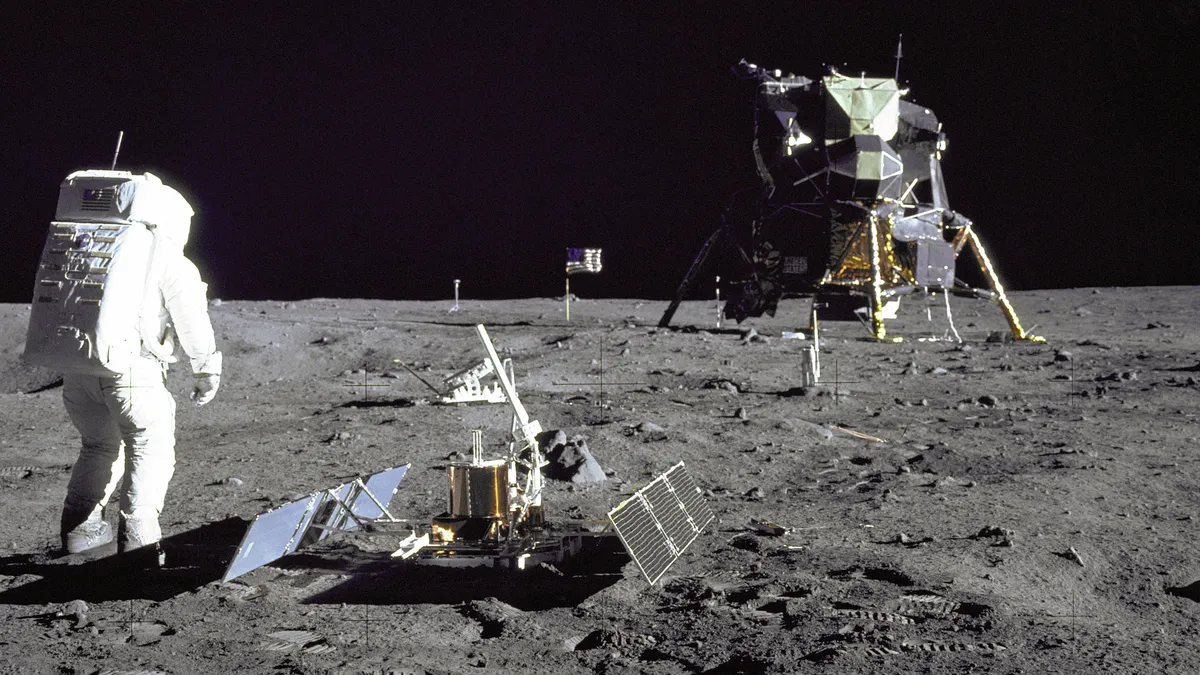After 50 years, US to return to Moon on Jan 25
In a momentous undertaking, the United States is set to rekindle lunar exploration more than half a century after the last Apollo mission. The mission, scheduled for January 25, will be led by Astrobotic, a pioneering American company on the brink of achieving the first private lunar landing. The Peregrine lander, carrying NASA instruments, will embark on this historic journey, contributing crucial data for NASA’s Artemis manned missions. This article delves into the intricacies of the upcoming lunar mission, exploring the significance of private involvement, the challenges faced, and the broader implications for the future of lunar exploration.

Astrobotic’s Peregrine Lander: A Pinnacle of Private Lunar Exploration
The Peregrine lander, developed by the American company Astrobotic, represents a groundbreaking leap in private lunar exploration. Marking a shift from governmental endeavors, Peregrine is poised to be the first private craft to successfully touch down on the lunar surface. Astrobotic’s CEO, John Thornton, emphasizes that while the lander will be devoid of human presence, it will carry NASA instruments aimed at studying the lunar environment. This marks a significant collaboration between private and public entities, paving the way for a new era in space exploration.
NASA’s Artemis Program and Commercial Lunar Payload Services (CLPS):
NASA’s Artemis program, designed to return humans to the Moon and establish a sustainable lunar presence, has spurred collaborative initiatives. The Commercial Lunar Payload Services (CLPS) program, initiated by NASA, exemplifies this collaboration by commissioning US companies to transport scientific experiments and technologies to the Moon. Astrobotic’s Peregrine lander is a key participant in this program, symbolizing the potential for a lunar economy and cost-effective transport services.
John Thornton, at a press briefing in Pittsburgh on November 29, highlighted the significance of the CLPS program. He emphasized the program’s role in attempting a launch and lunar landing at a fraction of the traditional cost. The fixed-price contracts with private companies, including Astrobotic, aim to stimulate the development of a lunar economy and facilitate more affordable space exploration endeavors.
Launch Details and Mission Timeline:
The highly anticipated takeoff of the Peregrine lander is scheduled for December 24 from Florida, riding on the inaugural flight of the new Vulcan Centaur rocket from the ULA industrial group. Following liftoff, the probe will embark on a journey taking “a few days” to reach lunar orbit. However, the actual landing attempt is strategically set for January 25 to ensure optimal light conditions at the target location, a detail emphasized by John Thornton.
The descent to the lunar surface will be executed autonomously, without human intervention. Astrobotic’s control center will vigilantly monitor the landing, underscoring the fusion of advanced technology and meticulous planning involved in this historic lunar mission.
Private Lunar Landings: A Global Endeavor with Astrobotic Leading the Way
While Astrobotic stands on the verge of making history with the Peregrine lander, it is not the first attempt by a private company to achieve a lunar landing. In the spring, the Japanese start-up ispace made a similar endeavor, although it concluded in a crash. These endeavors highlight the challenges and uncertainties associated with private lunar landings. Astrobotic’s mission, however, signifies a renewed determination and advancement in technology, with the potential to reshape the landscape of lunar exploration.
Global Lunar Explorations and NASA’s Collaborative Approach:
The exclusive club of nations that have successfully landed on the Moon currently includes the United States, Russia, China, and India. Astrobotic’s mission adds a pioneering private company to this list, illustrating a diversified and collaborative approach to lunar exploration. In addition to Astrobotic, NASA has inked contracts with other companies like Firefly Aerospace, Draper, and Intuitive Machines. Notably, Intuitive Machines is set to take off aboard a SpaceX rocket in January, underscoring the collaborative nature of NASA’s approach.
Challenges and NASA’s Acceptance of Risks:
The CLPS program, with its collaborative model, acknowledges the inherent risks associated with lunar missions. Chris Culbert, the CLPS program manager, stated that NASA’s leadership is aware of these risks and has accepted that not every mission might succeed. Despite potential setbacks, Culbert emphasizes that CLPS has already made a significant impact on the commercial infrastructure needed to establish a lunar economy.
Implications for the Lunar Economy and NASA’s Artemis Program:
Beyond immediate mission objectives, the collaborative efforts between private companies and NASA signal a potential shift towards the development of a lunar economy. The fixed-price contracts, aimed at fostering commercial infrastructure, could lay the groundwork for sustained lunar exploration and resource utilization. NASA’s Artemis program, with aspirations to establish a base on the Moon, aligns with this broader vision of long-term lunar presence.

Conclusion:
The impending lunar mission led by Astrobotic marks a historic return for the United States to the Moon after more than 50 years. The collaboration between private and public entities, epitomized by the Peregrine lander, symbolizes a significant stride in the evolution of space exploration. As the mission unfolds, the world eagerly anticipates the success of the Peregrine lander, poised to contribute valuable insights that will shape the future of lunar exploration and inspire further collaborative endeavors on celestial frontiers.



